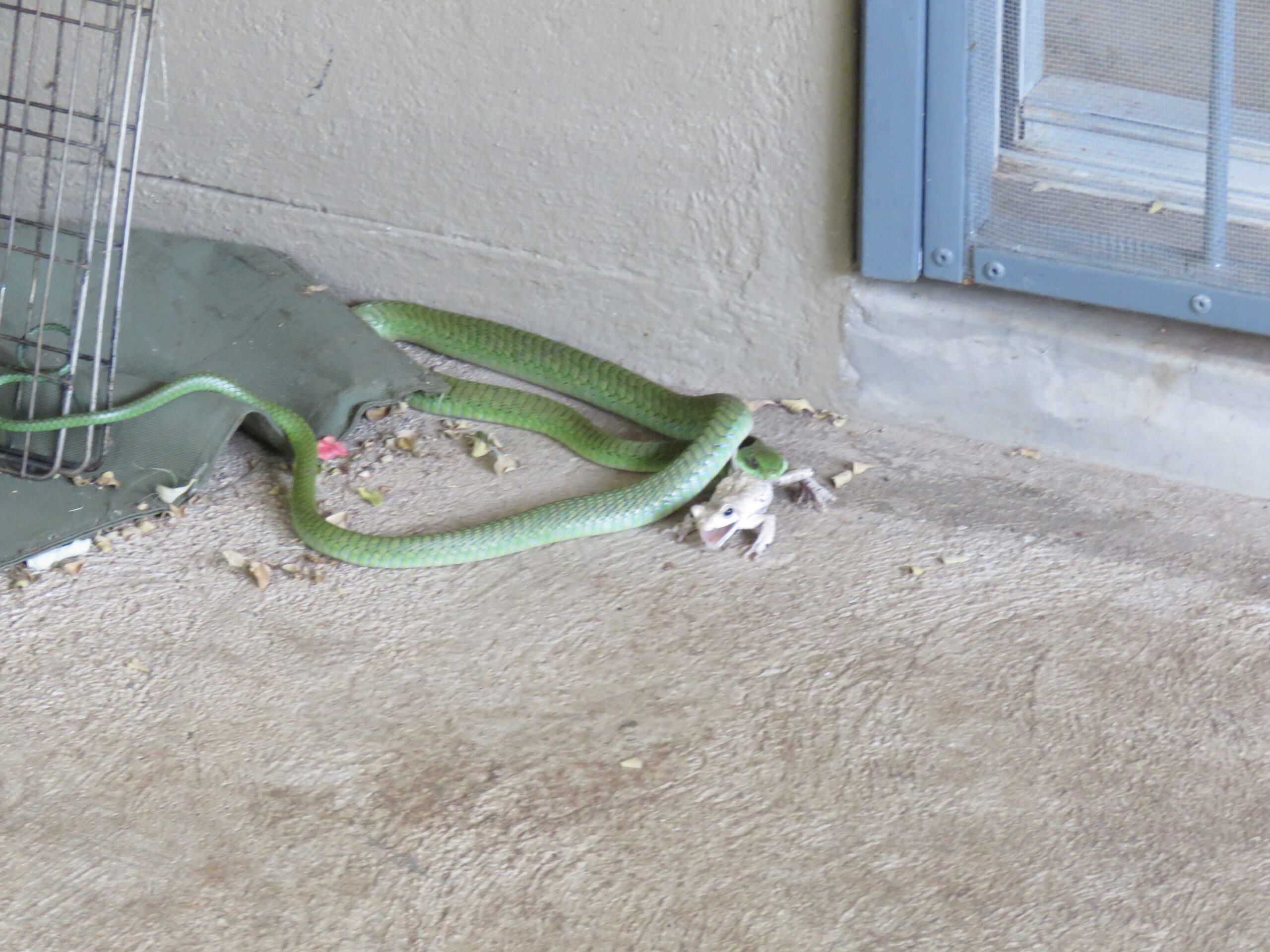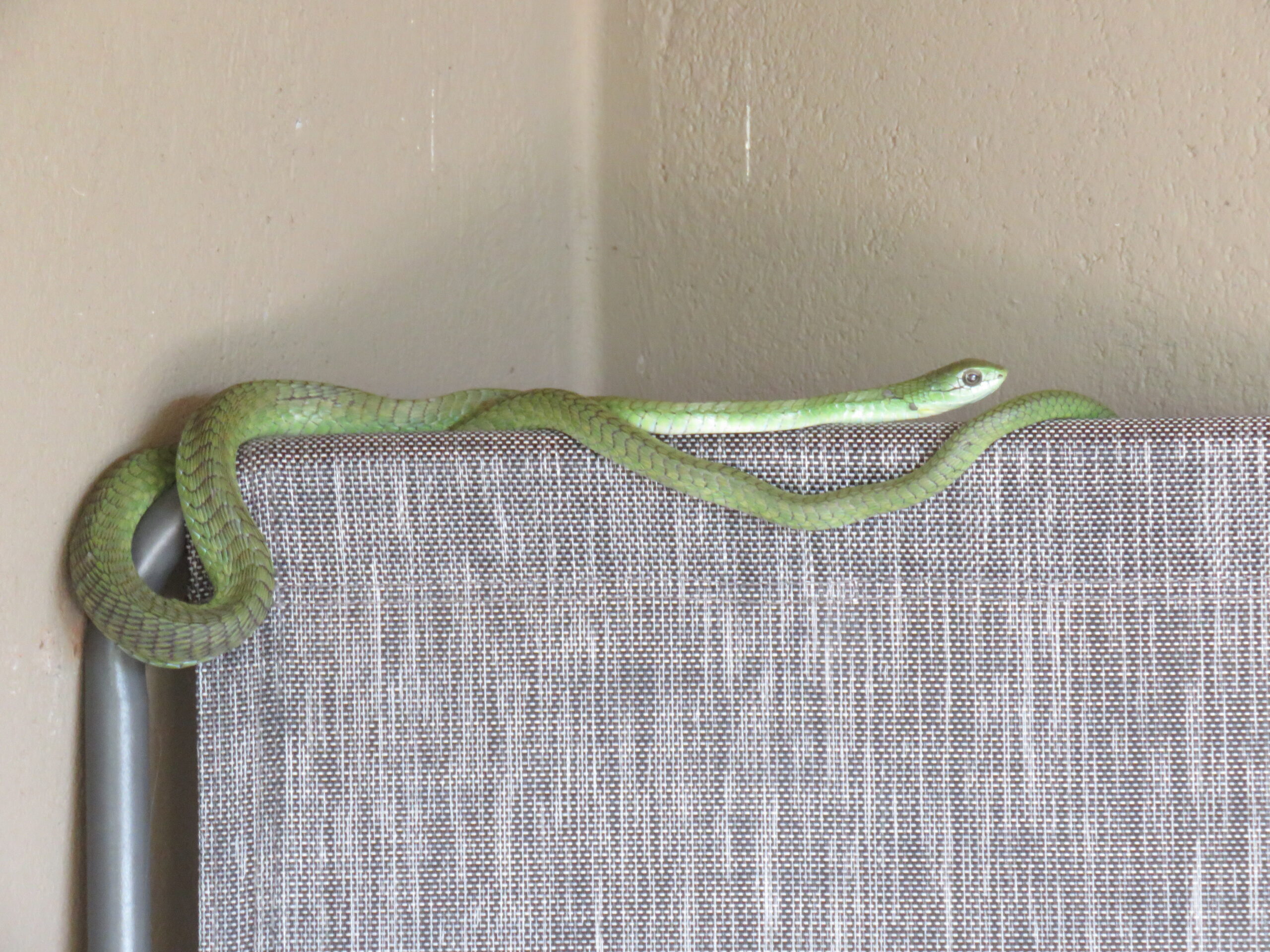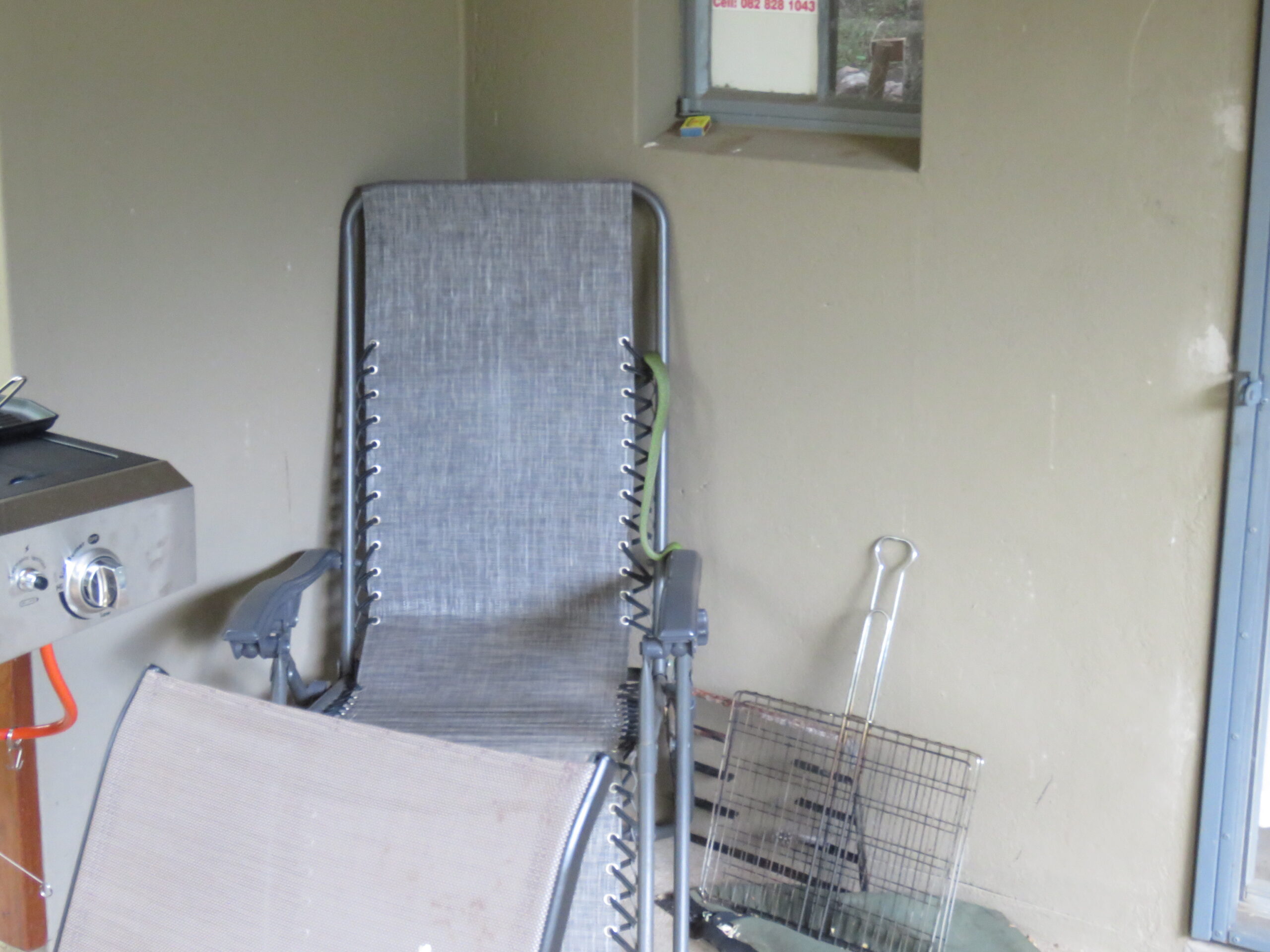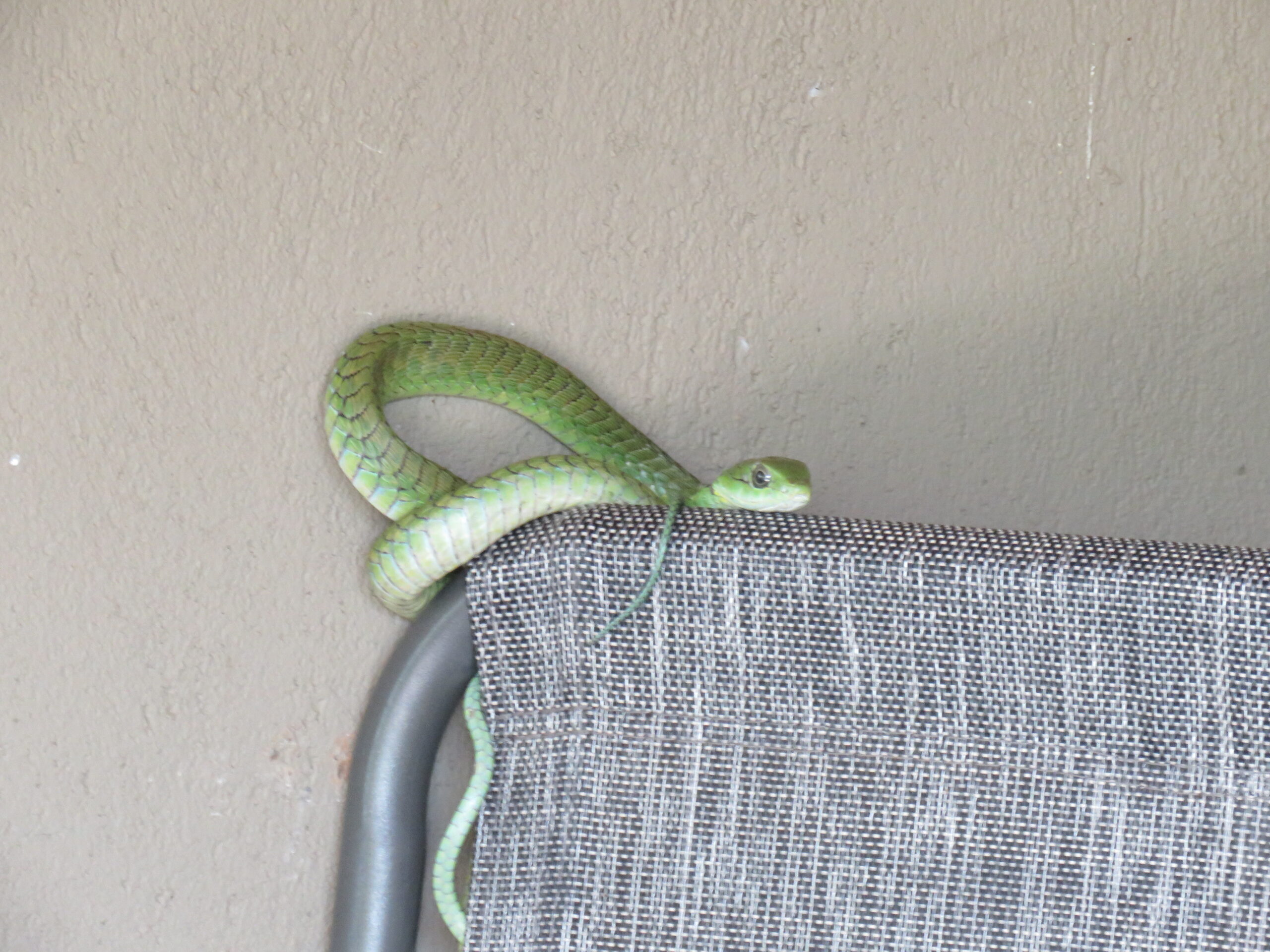
When we wrote about the challenges of living in Africa, we mentioned three areas of concern; excessive heat, venomous insects (non-venomous don’t concern us), and snakes. Since arriving in South Africa last Wednesday afternoon, we’ve experienced the heat (over 100F, 38C, a few scary insects and yesterday, wouldn’t you know, a highly venomous snake within 1 foot, 30 cm from me, and 3 feet, 3 1 meter, from Tom.

I spotted it first when opening the push-out screen door to return from inside the house to the veranda. I didn’t make a sound other than to alert Tom, who was very close as well. The first thing we noticed was that he had a frog halfway down his throat. That was quite a sight to see, resulting in today’s included photos. This wasn’t our first up-close and personal experience with a venomous snake, a Mozambique Spitting Cobra, while here in 2014. Click here for that post.

Gingerly, we both backed away, still keeping an eye on it. Of course, adding to the excitement was the fact he was eating the frog and his mouth was preoccupied. Perhaps, that fact was our protection. With his mouth full, he couldn’t bite us. Yikes!
We knew we needed to call Juan (pronounced John), the young master snake handler whom we knew from our past 15 months in Marloth Park in 2018-2019. His family owns Daisy’s Den, the local feed and supply store. We’d attended snake-handling school with Juan in 2018. From that class and more, he became the skilled handler and we became the knees-knocking neophytes. All we could think of was contacting him as soon as possible.

Our snake school experience in 2018 and the subsequent story we posted at that time, here, made us suspect it was a highly venomous Boomslang based on its bright green appearance. We took a photo and sent it to Louise knowing she’d respond quickly to our request for Juan to come out as soon as possible. Now, we have his business card in our possession at all times and his number on both of our phones so we can call him directly in the future.
Here’s a photo from our snake school experience at this link on March 12, 2018:
 |
| Chris, the instructor in March 2018, from this post here, was handling the highly venomous snake, the Boomslang. Males are green and females are brown. However, it’s nearly impossible to determine the sex of most other snakes when both genders are typically identical in appearance. “The Boomslang (Dispholidus typus) is an extremely dangerous, venomous snake species found in sub-Saharan Africa in the central and southern regions of the continent. The Boomslang is most abundant in Botswana, Swaziland, Namibia, Mozambique, and Zimbabwe, but the species has been reported as far north as southern Chad and Nigeria, and as far east as eastern Guinea. However, they are found here in South Africa as well. |
Going forward, we’ll always keep at least one of our phones outside with us on the veranda at any given time, instead of charging in the house. Based on the fact the snake was hovering near the door to the house, it would have been impossible to get inside to get the phone without serious risk. He’d finally swallowed the frog whole and we could see it waiting to be digested in his body as a big bulge.

(I am referring to the snake as a “he” when in fact, the male Boomslangs are green and the females are brown).
Louise immediately responded asking us that we take a photo which she’d forward it to Juan. In less than, two minutes, Louise informed us that Juan was on his way. It was the dreaded Boomslang, the third most venomous snake in Africa, the first being the Black Mamba, the second, the Puff adder, and the third, the Boomslang.

In a matter of minutes, Juan pulled into the driveway and headed directly to the back of the house to the veranda, where we still stood a distance keeping an eye on the snake to ensure it wouldn’t get away. Handlers never kill a snake.
Once he arrived, immediately confirming it was a Boomslang, he grabbed the snake several inches behind its head with the snake grabbers, and with his free hand, he grabbed the snake’s tail. He then placed it in a plastic container with air holes, and tightly positioned the lid to take the snake to an even more remote area than Marloth Park.

Juan’s service is complimentary, but like most, we insisted he accepts a generous tip for his professional efforts, so perfectly executed. In less than 10 minutes Juan was on his way with the snake firmly ensconced in the plastic bucket. Of course, we were a little startled by the presence of the snake, which reminded us to be all the more careful and observant going forward.

A snake could lie in wait anywhere; on a wall, on the ceiling, on a railing or piece of furniture, under a bed, in a bed, or simply slivering across a floor. Nowhere in the house or in the garden is exempt from attracting a snake. Caution must be exercised at every turn, every moment, and upon entering a room.

Last night while on the veranda in the dark, we placed two rechargeable lanterns at different spots on the floor to ensure we could see all areas of the veranda. We are more mindful now than ever.
To contact Juan’s Reptile Rescue and Identification, call 060 665 5000 or email: debeer.juan@yahoo.com

This is Africa. This is to be expected here and when careful, it’s all a part of the adventure. I must admit, we were excited to share this story and photos with all of you today!
Stay safe from whatever comes your way!
Photo from one year ago today, January 19, 2020:
 |
| On our way to the alpaca farm in New Plymouth, New Zealand on this date in 2016, we stopped at a few scenic overlooks in the rain. For the year-ago story, please click here. |





























